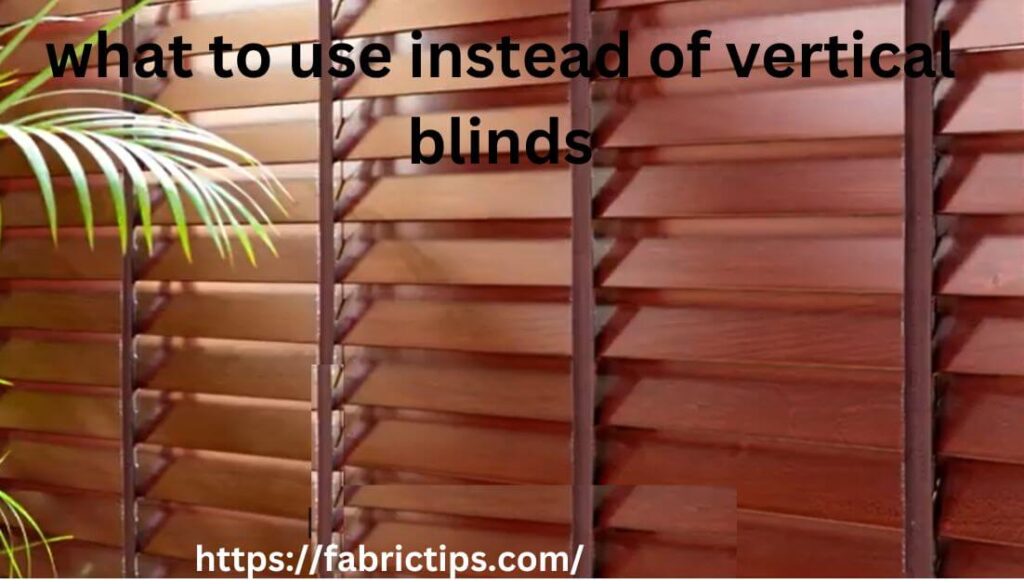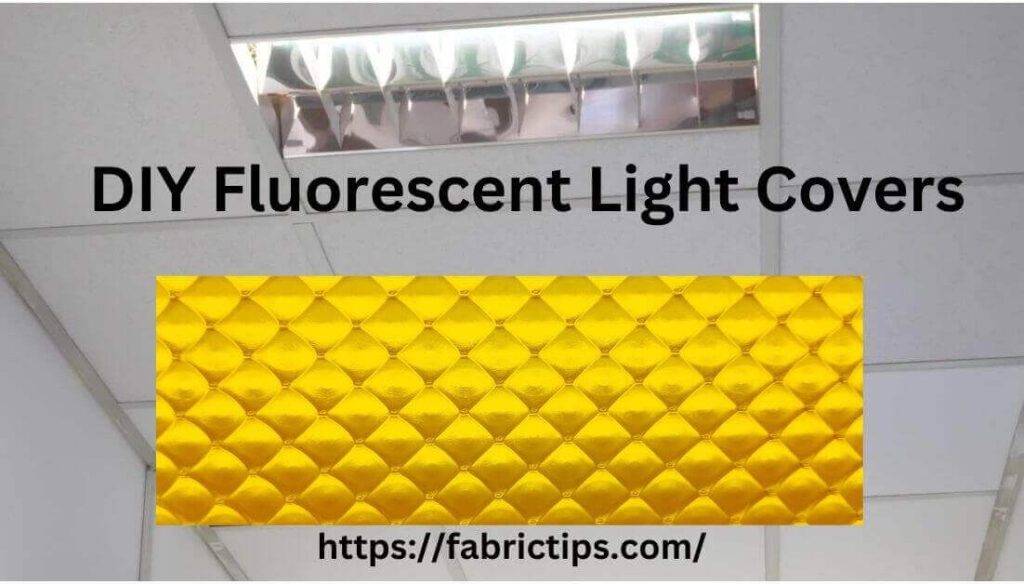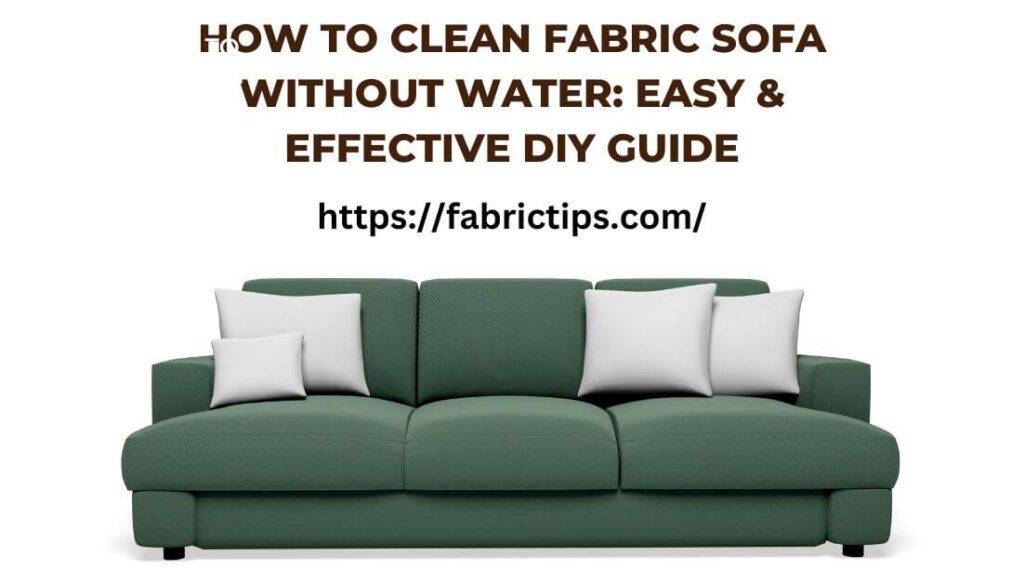Last Updated on January 31, 2025 by Wahid
Vertical blinds have been a popular window treatment choice for decades, known for their ability to control light and privacy. However, they come with certain drawbacks such as:
- Limited design options led to a dated look.
- Prone to damage and wear over time.
- Not always the most energy-efficient option.
- Can be challenging to clean and maintain.
Importance of Finding Stylish Alternatives:
- In today’s interior design landscape, aesthetics is crucial in creating a cohesive and visually appealing space.
- Window treatments are a prominent feature in any room and can significantly impact the overall look and feel.
- Therefore, finding stylish alternatives to vertical blinds is essential to enhance the beauty and functionality of your home or office environment.
Through detailed insights on what to use instead of vertical blinds, buying guides, and practical tips. Thus, our goal is to empower readers to make informed decisions when selecting window treatments, ultimately elevating the design and ambiance of their spaces.
Why Look for Vertical Blinds Alternatives?

A. Common Issues with Vertical Blinds:
- Limited Design Options: Vertical blinds often come in standard sizes, colors, and materials, limiting customization possibilities.
- Prone to Damage: Vertical blinds can be easily damaged, especially in high-traffic areas or homes with children and pets.
- Maintenance Challenges: Cleaning vertical blinds can be cumbersome due to their vertical orientation, requiring frequent dusting and occasional deep cleaning.
- Noise and Clutter: Vertical blinds can produce noise when opening or closing, and the hanging vanes can create visual clutter, detracting from the overall aesthetics of the space.
- Durability Concerns: Over time, vertical blinds may become brittle or discolored, requiring replacement or repairs.
B. Impact on Aesthetics and Functionality:
- Aesthetic Limitations: Vertical blinds may not complement all interior design styles, and their appearance can feel outdated or uninspired.
- Light Control: While vertical blinds offer some degree of light control, they may not provide sufficient privacy or block out enough sunlight, impacting comfort and ambiance.
- Room Size Perception: In smaller rooms, vertical blinds can make windows appear narrower, potentially diminishing the sense of space and openness.
- Visual Cohesion: Choosing window treatments that harmonize with other design elements can enhance the overall aesthetic appeal and create a cohesive look throughout the room or home.
C. Environmental Considerations:
- Material Choices: Many vertical blinds are made from PVC (polyvinyl chloride), which can be harmful to the environment during production and disposal.
- Energy Efficiency: Vertical blinds may not offer significant insulation properties, leading to energy loss through windows and increased heating or cooling costs.
- Sustainable Alternatives: By opting for eco-friendly window treatment options, such as those made from renewable materials or with energy-saving features, individuals can reduce their environmental footprint and promote sustainability.
- Long-Term Impact: Considering the lifecycle of window treatments and their environmental impact can guide consumers toward choices that align with their values and contribute to a more sustainable living environment.
What to Use Instead of Vertical Blinds: Stylish Alternatives
A. Curtains and Drapes
Different Styles and Fabrics:
- Curtains and drapes come in various styles such as sheer, blackout, pleated, grommet, and more, offering versatility in design.
- Fabrics range from lightweight sheers to heavy velvet, allowing for customization based on light control, privacy, and aesthetic preferences.
Customization Options:
- Tailoring curtains and drapes to fit specific window dimensions allows for a personalized look.
- Additional customization options include selecting trimmings, tiebacks, and hardware to complement the decor.
Pros and Cons:
- Pros: Versatile design options, customizable, softens the room, offers excellent light control and privacy.
- Cons: Requires regular cleaning, may block views when closed, can accumulate dust and allergens.
B. Roman Shades
Timeless Elegance:
- Roman shades add a touch of sophistication and elegance to any room, with their classic design and smooth, tailored appearance.
Light-Filtering and Blackout Options:
- Available in light-filtering and blackout fabrics, allowing for customizable levels of light control and privacy.
Installation and Maintenance Tips:
- Installation typically involves mounting brackets above the window frame or inside the window recess.
- Regular dusting or vacuuming and occasional spot cleaning are recommended for maintenance.
C. Roller Shades
Modern and Minimalist Appeal:
- Roller shades offer a sleek, contemporary look that complements modern interior designs.
Light Control and Privacy Features:
- Available in various opacity levels, from sheer to blackout, allowing for precise control over incoming light and privacy.
Considerations for Material Selection:
- Materials range from vinyl to fabric, with options for moisture-resistant and eco-friendly materials to suit different needs.
D. Cellular Shades
Energy-Efficient Design:
- Cellular shades, also known as honeycomb shades, feature a unique honeycomb structure that traps air, providing insulation and improving energy efficiency.
Honeycomb Structure Benefits:
- The cellular design enhances insulation, reducing heat loss in winter and heat gain in summer.
Versatility in Light Control:
- Available in single-cell or double-cell configurations, offering options for light filtering, room darkening, or blackout.
E. Wooden or Faux Wood Blinds
Natural Warmth and Texture:
- Wooden blinds add warmth and texture to any space, bringing a touch of nature indoors.
Durability and Moisture Resistance:
- Faux wood blinds are resistant to moisture, making them suitable for high-humidity areas such as bathrooms and kitchens.
Design Options and Maintenance Guidelines:
- Available in various stains and finishes to complement different decor styles, with easy-to-clean surfaces requiring minimal maintenance.
F. Panel Track Blinds
Sleek and Contemporary Look:
- Panel track blinds offer a modern alternative to traditional vertical blinds, featuring large fabric panels that glide smoothly along tracks.
Perfect for Large Windows or Sliding Doors:
- Ideal for covering large expanses of glass, such as sliding doors or floor-to-ceiling windows, providing seamless coverage and effortless operation.
Customization Options and Installation Process:
- Panel track blinds can be customized with different fabric choices, textures, and panel widths to suit individual preferences.
- Installation involves mounting a track system above the opening, with panels easily sliding into place for a clean, streamlined look.
Tips for Buying and Installation
A. Measuring Your Windows Accurately:
- Use a tape measure to determine the width and height of each window, taking into account any trim or obstructions.
- Measure both inside the window frame (for an inside mount) and outside the frame (for an outside mount) to ensure proper fit.
- Double-check measurements to avoid ordering window treatments that are too small or too large.
B. Choosing the Right Fabric or Material:
- Consider the function and location of the window treatment when selecting fabric or material.
- For areas with high humidity or moisture, choose moisture-resistant materials such as vinyl or aluminum blinds.
- Select fabrics that offer the desired level of light control, privacy, and insulation based on your preferences and needs.
C. Seeking Professional Assistance if Needed:
- If you’re unsure about measuring or installing window treatments, consider hiring a professional installer.
- Professional installers have the expertise and tools to ensure that window treatments are installed correctly and securely.
- They can also provide advice on product selection and customization options based on your specific requirements.
D. Maintenance and Cleaning Guidelines:
- Follow manufacturer’s instructions for cleaning and maintenance to prolong the life of your window treatments.
- Regular dusting or vacuuming can help keep blinds, shades, or curtains free of dust and debris.
- For fabric window treatments, spot clean with a mild detergent or have them professionally cleaned as needed.
- Avoid using harsh chemicals or abrasive cleaners that can damage the fabric or material.
Yes, by following these tips for buying and installation, you can ensure that your chosen window treatments fit properly, function effectively, and remain in good condition for years to come. If you have any doubts or questions about what to use instead of vertical blinds process, don’t hesitate to seek professional assistance for guidance and support.
What Are Some Good Solutions For Covering a Sliding Glass Door, Other Than Vertical Blinds?

“B.Arch from School of Planning and Architecture”
Are you looking for what to use instead of vertical blinds? It primarily depends on the context of the sliding doors. I mean context, whether it is a commercial space (offices) or a private space (house). Secondly, where within the building is it located? If it is on the exterior walls, the solutions will differ from what you might use for the internal sliding doors.
Now the four major categories formed are:
Commercial Space – Exterior
The easiest and the best solution for commercial spaces is using ‘One-way visibility window films’ which will give your space privacy and also help you advertise your company from the exterior side.
You can use rolling solar shades.
If you have the budget and the size of the building allows you to get a facade treatment done in which louvers can be attached at a certain distance from the building which gives the building aesthetic value and also provides sun shading.
Commercial Space – Interior
For interiors, there is not much to use due to restrictions of professionalism.
The best and cheapest solution for the interior is blinds – vertical, horizontal, or rolling.
You could use curtains, but it’s up to personal preference and the work environment.
House – Exterior
For house exteriors, the options are limited, you can apply slightly tinted films on the glass panels. You can use window grills of differing patterns which will give the door a vintage look and will add a layer of security.
House – Interior
It would be unfair to say that there are limited solutions for indoors as there is so much you can do and it’s up to each individual’s personal creativity and sense of aesthetics.
Still, the most commonly used solution is curtains which come in hundreds of patterns and varying thicknesses with each one giving the space a different look.
Finally, there are many other covering solutions, not only for doors but also windows.
See Other Post: No Risk & Authentic DIY: How To Clean Fabric Vertical Blinds
Factors to Consider When Choosing Alternatives
A. Window Size and Shape:
- Consider the dimensions and configuration of your windows to ensure that the chosen alternative fits properly and functions effectively.
- Take into account any irregularities in window shape or size that may require custom solutions or adjustments.
B. Desired Level of Light Control and Privacy:
- Evaluate your preferences for light filtration, glare reduction, and privacy.
- Choose window treatments that offer the desired level of control over incoming light and visibility into the room.
C. Interior Design Style and Color Scheme:
- Take into consideration the overall aesthetic of your space, including furniture, flooring, and decor.
- Select window treatments that complement the existing design style and color scheme, whether it’s modern, traditional, minimalist, or eclectic.
D. Budget Considerations:
- Determine your budget for window treatments, including both upfront costs and long-term maintenance expenses.
- Explore options that offer the best value for your budget while meeting your functional and aesthetic requirements.
E. Environmental Impact and Sustainability:
- Evaluate the environmental impact of different window treatment materials and manufacturing processes.
- Choose alternatives made from sustainable or eco-friendly materials and manufactured using environmentally responsible practices.
- Consider the energy efficiency of window treatments and their potential impact on heating and cooling costs.
- Look for certifications or labels indicating eco-friendly attributes, such as ENERGY STAR certification or materials sourced from renewable sources.
Ultimately, by considering these factors on what to use instead of vertical blinds, you can make informed decisions that enhance the functionality, aesthetics, and sustainability of your living space.
FAQs
What kind of blinds do you put on sliding glass doors?
Usually, you can use vertical blinds. It is mainly due to the fact that any other type of blind must be installed high above the door. In this way, you can still get out of the door when the blind is raised.
How do you modernize vertical blinds?
It’s all about fabric and starch if you want to update your vertical blinds. Your vertical blinds can be changed to a different color or pattern very easily. Choose a fabric that you like or that matches your new decor, dividing it into strips of the same length & width as your blinds.
What are blackout vertical blinds?
By installing blackout vertical blinds in your room, you can determine how much light gets in, resulting in a more comfortable environment. It is best to use them in rooms that receive too much light, such as offices or homes. Their versatility makes them suitable for a wide range of window types.
What color should vertical blinds be?
“Neutral colors” like white, beige, & gray make popular window shades and blinds since they are versatile and complement a wide range of decor styles. However, white, beige, & gray colors can also enhance a room’s appearance by making it appear larger and brighter.
Should blinds be lighter or darker than the walls?
Choosing blinds that match your wall color is still safe, but it gives your room a little more personality. Looks with tones on tones are very much in style, and this is a simple way to get into the trend. Instead, try something a couple of shades lighter than your wall color to create a cohesive design without feeling overwhelmingly heavy.
Are vertical blinds old-fashioned now?
Although vertical blinds have faded from view a little since their heyday in the 1980s, they have never completely gone out of style. Nevertheless, they have enjoyed a resurgence in popularity recently. Thankfully, 1980s fashion has moved on from the flashy, gaudy styles.
In Conclusion
Throughout this guide, we’ve explored what to use instead of vertical blinds and a variety of stylish alternatives to vertical blinds. This includes curtains and drapes, Roman shades, roller shades, cellular shades, wooden or faux wood blinds, and panel track blinds. Hence, each alternative offers unique features and benefits, allowing you to find the perfect window treatment solution that aligns with your preferences and needs.
Finally, selecting stylish alternatives to vertical blinds is essential for enhancing the overall aesthetics and functionality of your living space. Take the time to research and compare different alternatives, and don’t hesitate to seek professional assistance if needed. You can enhance your windows’ beauty, functionality, & sustainability by exploring various options and considering your specific needs.








